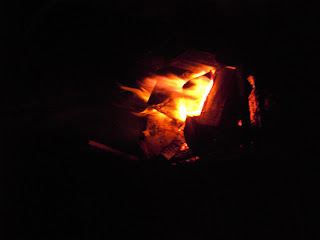
I’d never met a landlady like Beatrice Maerten. Along with her husband, she ran a guesthouse in the French Flemish village of Boeschepe, on the edge of the hop-growing area that stretches north from Steenvoorde over the Belgian border to Poperinge. This was a house of beer. Each room was named after a Trappist or Abbey classic, while if you called ahead you might even be offered a beer dinner. I stayed for one night and had
St-Sylvestre Biére Nouvelle as an aperitif, while
Annoeullin’s exquisite L’Angelus accompanied a ham and cheese crepe, followed by a beery carbonade. Post-dessert contemplation came with a bottle of St-Sylvestre’s strong-armed ale
Gavroche. There were more surprises. ‘I thought you would like this,’ she said next morning, handing over a bottle of
Westvleteren 12. Beats a Blackpool guesthouse any day.
This was back in November 2005, when I was visiting breweries in the
bière de garde region and I thought of her generosity the other night when I finally opened the bottle. I also thought of the furore that ensued when the same beer was rated the best in the world in 2005. I’m not the greatest believer in ‘best of’ lists (there is no such thing as the best beer in the world — just the best beer at the right moment), but on the occasions when I have drank a Westvleteren I’ve really enjoyed them. So into a glass the beer went. Burnished chestnut in colour, glimmering away, blessed with a gorgeous espresso head, and good carbonation. The nose brought forward cherry-flavoured plain chocolate, along with a memory of those big caramel coloured slabs of toffee that had been kept in a sweet shop for too long (I’m thinking of a place near the Bakers Arms on East Road in Cambridge), but still remained attractive. Tasted it was wine-like, more Châteauneuf-du-Pape than anything else, peppery, along with a fullness and a chocolate liqueur-like character. The cellar-like notes told me that the beer hadn’t lost its rusticity, that this was not a smooth beer, I liked that about it. I also got a whisper of nougat with nuts on the palate. There was plenty going on and I was also impressed that it had lasted so well so long (sometimes you get Marmite notes with Thomas Hardy beers that are barely a couple of years old); I was also taken with its sense of elegance mingling with the handsome rusticity.
Whether this is one of the best beers in the world (Public Enemy’s Don’t Believe The Hype starts up in my head) I will leave to the point-scorers but along with
Lost Abbey’s Ten Commandments and
Kapittel’s Prior (which bowled me over last night), it is one of the best beers for me of 2010 — so far.








